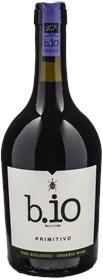Apulia is renowned for its iconic trulli, yet its viticulture offers a hidden gem waiting to be explored. Beyond the rustic charm of its architecture lies a land steeped in the tradition of producing exceptional red and rosé wines.
If you enjoy Trentino wines, you can find a article about Cavit wines on the blog.
Index:
Climate and Terroir
The climate of Apulia is Mediterranean. Winters are mild and low in rainfall, while summers are hot, dry, and breezy. This climate favors the production of structured wines.
The soils are mainly limestone-clayey. The best results are obtained from limestone and sandy soils.
In the karst plateau of the Murge, the soils are limestone-clayey or siliceous-clayey. A characteristic of this plateau is the strong temperature variations.
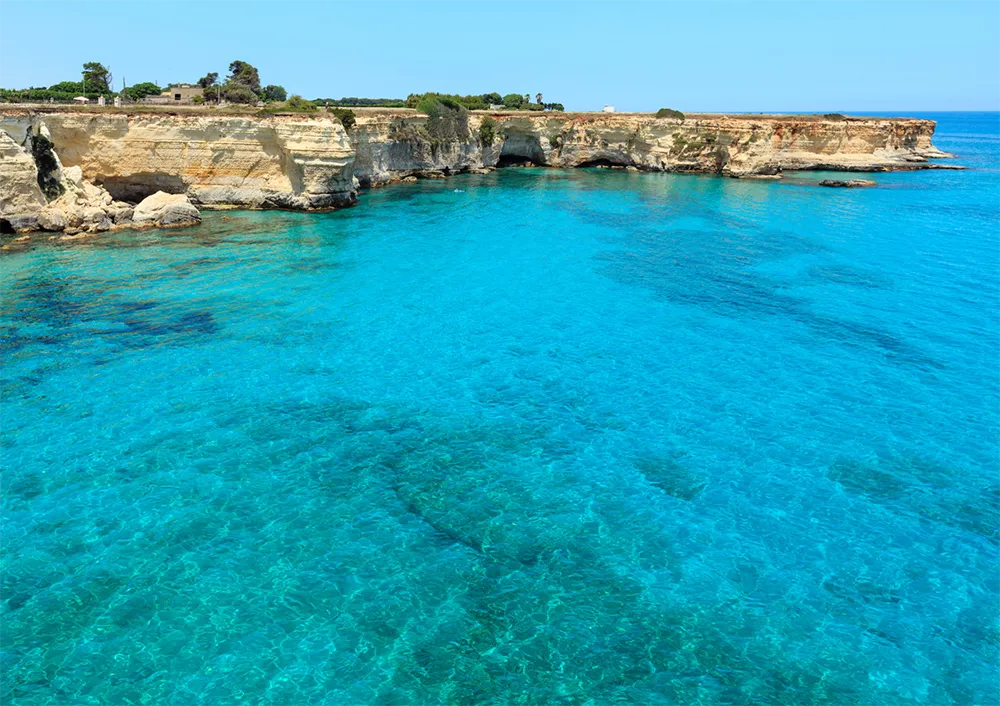
Along the coast between the Murge and the Adriatic Sea, the soils are tuffaceous and sandy, ideal for the cultivation of Moscato Reale.
Finally, in Salento, the soils are red, composed of a mix of limestone and clay.
Grape Varieties
Apulian vines thrive, primarily trained using the Spalliera system in the Salento region, while the Alberello method finds favor in Salento and select areas of Bari.
Notably, the region boasts an array of indigenous and international grape varieties.
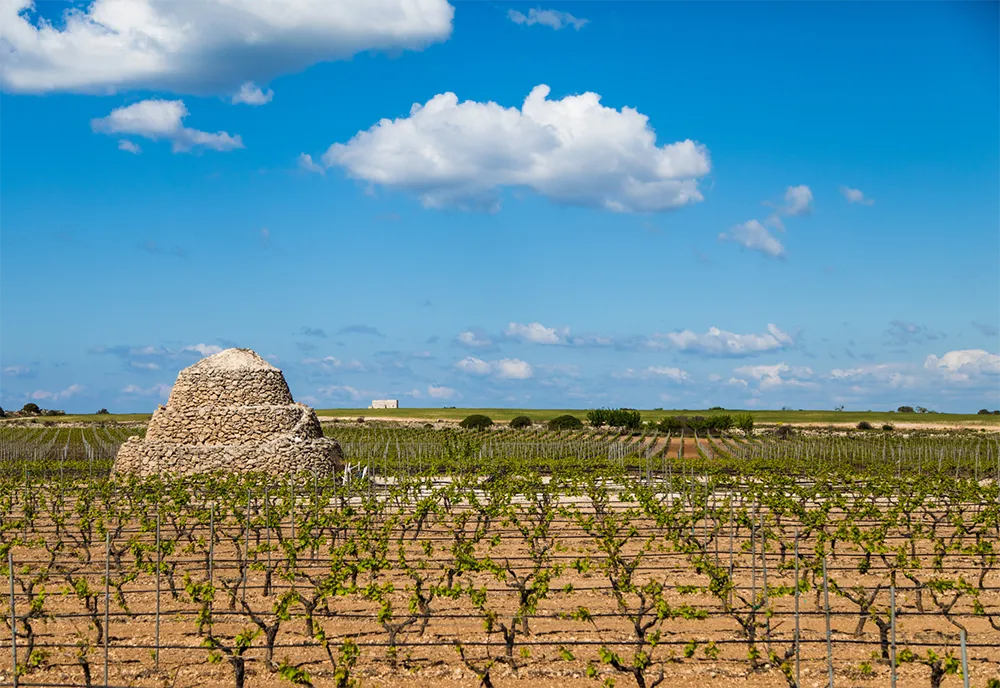
Red Grape Varieties
- Negroamaro: A cornerstone of Apulian viticulture, possibly introduced by ancient Greeks, known for its deep color and bittersweet finish
- Primitivo: Traced back to Slavic migrants in the 15th and 16th centuries, producing rich, early-ripening grapes, with a unique second harvest yielding distinct flavors
- Uva di Troia: Also known as “Diomede’s grape,” renowned for its late ripening
- Malvasia Nera: Often blended with Negroamaro, offering nuanced notes of pomegranate and raspberry
- Bombino Nero: Thriving in the Castel del Monte area, contributing to fresh, fragrant rosé wines
White Grape Varieties
- Trebbiano Toscano: Widely cultivated but limited in quality.
- Verdeca: Indigenous to the Valle d’Itria, prized for its fresh, greenish hues
- Bombino Bianco: Dubbed “good wine” for its abundant yields, prevalent in Foggia and central-northern Bari
- Pampanuto: Cultivated in the Castel del Monte region
- Bianco d’Alessano and Minutolo: Prominent in the Itria Valley, offering distinctive aromatic profiles
Wine Regions
Noteworthy wine regions in Apulia include:
Capitanata
In ancient times, it was called Daunia, corresponding to today’s province of Foggia. In this area, red and rosé wines are produced, often vinified in purity. An exception is the Cacc’e Mmitte di Lucera DOC, a blend with Montepulciano, Sangiovese, and white grape berries.
Among the designations in this territory are San Severo and Tavoliere delle Puglie or Tavoliere.
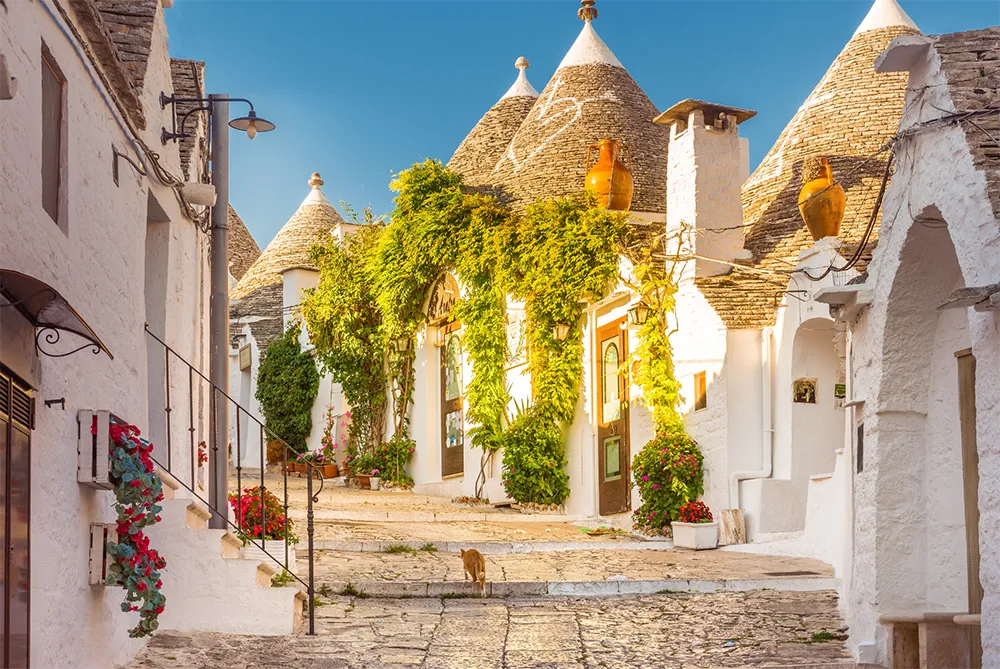
Murgia Centrale
Murge derives from the Latin murex, meaning sharp stone.
This area is highly suitable for viticulture. The red wines are complex, structured, and long-lasting.
Among the designations in this area are Castel del Monte Nero di Troia Riserva DOCG, Castel del Monte Rosso DOC, Castel del Monte Aglianico DOC, and Castel del Monte Bombino Nero DOCG.
After years, the Moscato di Trani DOC is being rediscovered, a sweet wine that evokes memories of dried apricots, cedar zest, and orange. The ideal pairing for this wine is almond paste sweets. In the southern part of Murgia Centrale, there are the limestone hills of the Gravina and Gioia del Colle denominations. In the province of Bari, we find Locorotondo and Martina Franca, as well as the IGP Murgia and Itria Valley.
Itria Valley
In this territory, mainly white wines are produced. In particular, in the Gravina area, there is Malvasia Bianca, and in the Gioia del Colle area, there are Trebbiano Toscano, Chardonnay, Falanghina, Greco, and Minutolo.
While in the Locorotondo area, there are Verdeca and Bianco d’Alessano.
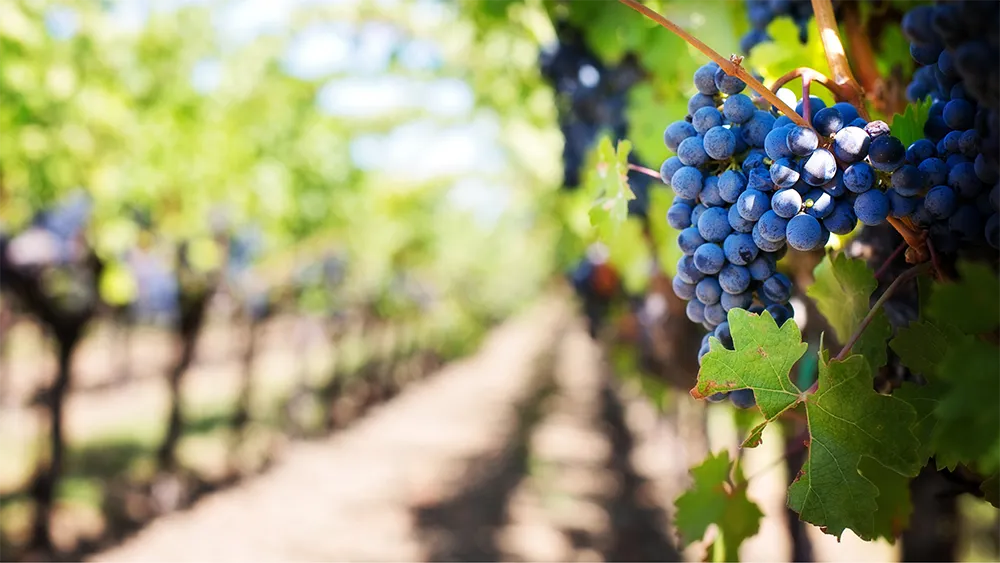
Salento
In Salento, there is a flat peninsula called the Tavoliere di Lecce.
This area is characterized by a unique microclimate: the summer heat is mitigated by sea breezes blowing from one coast to another, creating a climate similar to that of the hills.
The Alto Salento is particularly suitable for the cultivation of Negroamaro, and excellent red and rosé wines are produced.
Among the denominations, we find Brindisi DOC and Salice Salentino DOC, as well as the IGP Salento and Puglia. Wines of greater complexity and structure are obtained in the IGP Salento in the province of Brindisi.
Here, Malvasia Bianca, Fiano, Minutolo, Vermentino, Chardonnay, and Sauvignon are cultivated. Also, in this area, the best passito wines of the region are produced, including Aleatico, Negroamaro, Malvasia Nera, Malvasia Bianca, Chardonnay, Sauvignon, Sémillon, and Riesling. For example, the Salice Salentino Aleatico Dolce DOC pairs perfectly with a cherry strudel.
The Final Word
Exploring the wines of Apulia unveils a rich tapestry of flavors woven from indigenous grape varieties and diverse terroirs.
For further wine terminology, visit our blog’s small wine glossary.
Amo la buona cucina e le tradizioni enogastronomiche italiane, per me vino e dessert non sono solo un contorno ma la parte più interessante del buon vivere.


